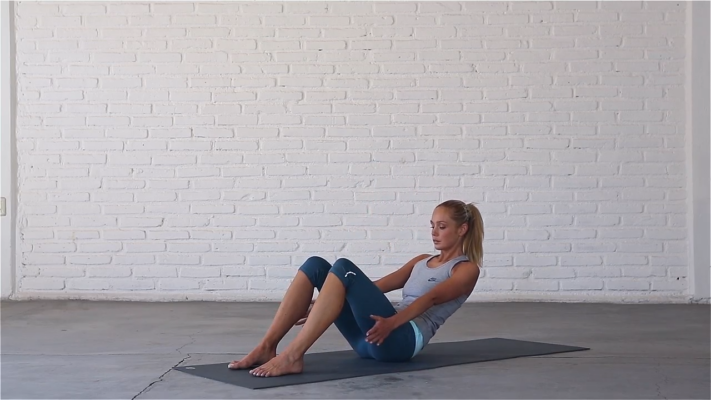Yoga Inner Peace and Mindfulness
Yoga Inner Peace and Mindfulness: Guided Meditation for Seniors and Individuals with Disabilities
Description: Yoga Inner Peace and Mindfulness is a guided meditation practice designed specifically for seniors and individuals with disabilities. This gentle exercise focuses on promoting relaxation, reducing stress, and enhancing mental clarity through mindful breathing and body awareness. It can be practiced seated in a chair or lying down, making it accessible for all ability levels.
How to Perform:
- Starting Position:
- Find a comfortable seated position in a chair with your feet flat on the floor and your hands resting on your thighs, or lie down on a yoga mat with your arms resting by your sides. Ensure your spine is straight, and you feel supported and relaxed. Close your eyes and take a few deep breaths to settle in.
- Body Awareness:
- Begin by bringing your awareness to your body. Notice how your body feels, the points of contact with the chair or mat, and any areas of tension or discomfort. Take a few moments to scan your body from head to toe, acknowledging and accepting any sensations without judgment.
- Breath Awareness:
- Shift your focus to your breath. Notice the natural rhythm of your breathing without trying to change it. Feel the cool air entering your nostrils and the warm air leaving. Place one hand on your chest and the other on your abdomen, feeling the rise and fall with each breath.
- Deep Breathing:
- Inhale deeply through your nose for a count of four, feeling your abdomen expand. Hold your breath for a count of four. Exhale slowly through your mouth for a count of six, feeling your body relax with each breath. Repeat this deep breathing cycle for several minutes, maintaining a steady and comfortable rhythm.
- Guided Visualization:
- Imagine a peaceful place where you feel safe and relaxed. This could be a beach, a forest, a garden, or any place that brings you comfort. Visualize the details of this place—the colors, sounds, smells, and textures. Spend a few minutes immersing yourself in this calming environment.
- Mantra Repetition:
- Choose a simple, positive mantra such as “I am calm,” “I am at peace,” or “I am safe.” On each inhale, silently repeat your chosen mantra, and on each exhale, let go of any stress or tension. Continue this practice for several minutes, allowing the mantra to guide you into a deeper state of relaxation.
- Progressive Muscle Relaxation:
- Starting with your feet, tense the muscles for a few seconds, then release and relax them completely. Move up through your body, tensing and relaxing each muscle group—calves, thighs, hips, abdomen, chest, arms, hands, shoulders, neck, and face. This practice helps release physical tension and promotes a sense of calm.
- Return to Breath Awareness:
- Gradually bring your awareness back to your breath. Notice the natural rhythm of your breathing and the sense of relaxation in your body. Take a few deep breaths, feeling grounded and present.
- Closing the Practice:
- Gently wiggle your fingers and toes, bringing subtle movement back to your body. If you are lying down, slowly roll onto your side and sit up at your own pace. If you are seated, open your eyes and take a moment to notice how you feel. End the practice with a few moments of gratitude, acknowledging the time you have taken for self-care and mindfulness.
Tips for Proper Practice:
- Find a quiet, comfortable space where you won’t be disturbed.
- Use supportive props such as cushions, blankets, or an eye pillow to enhance comfort.
- Practice at your own pace and adjust any part of the meditation to suit your needs.
- If you experience discomfort or difficulty with any part of the practice, modify or skip that section and focus on what feels good for you.
- Listen to guided meditation recordings if you find it helpful to have verbal guidance.
Benefits:
- Reduces Stress and Anxiety: The focus on breath and relaxation helps to calm the nervous system and reduce stress and anxiety levels.
- Promotes Relaxation: Encourages deep relaxation and helps release physical and mental tension.
- Enhances Mindfulness: Fosters present-moment awareness and mindfulness, improving overall mental clarity and focus.
- Improves Emotional Well-Being: Helps to manage emotions, promoting a sense of inner peace and emotional balance.
- Supports Physical Health: The gentle breathing and relaxation techniques can help improve circulation, lower blood pressure, and support overall physical health.
- Encourages Better Sleep: The calming effects of the meditation can help improve sleep quality and alleviate insomnia.
- Increases Self-Awareness: Enhances awareness of physical sensations and emotional states, promoting greater self-understanding and acceptance.
Incorporating Yoga Inner Peace and Mindfulness into your regular routine can help manage stress, improve relaxation, and enhance overall well-being. Always practice with mindfulness and respect for your body’s limits.

